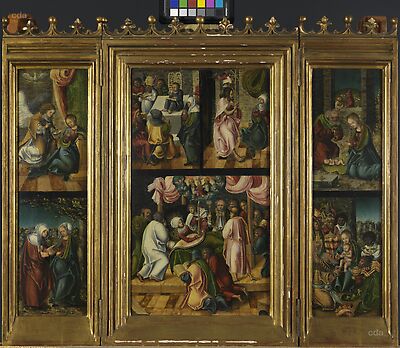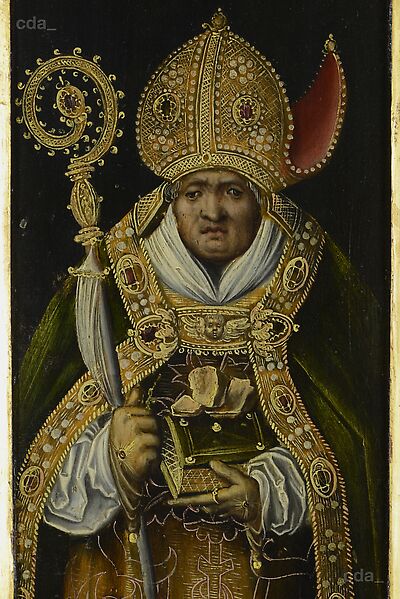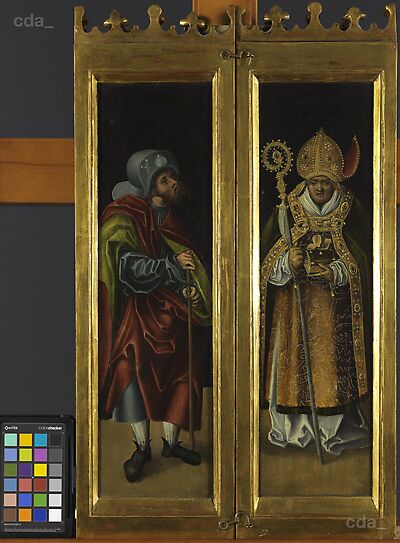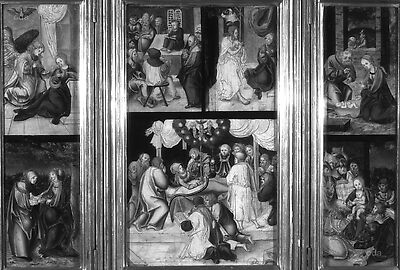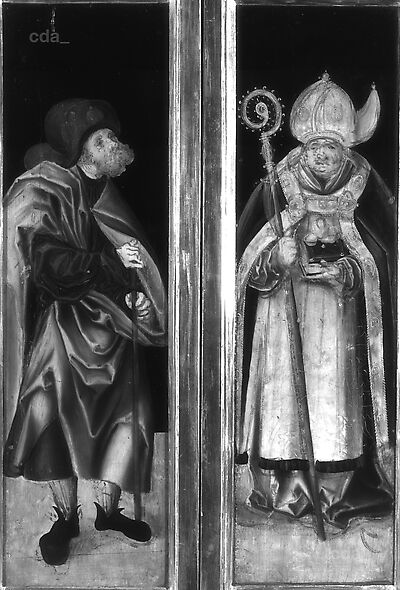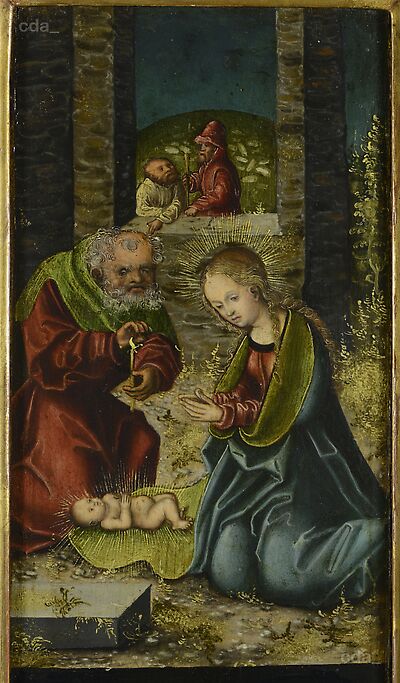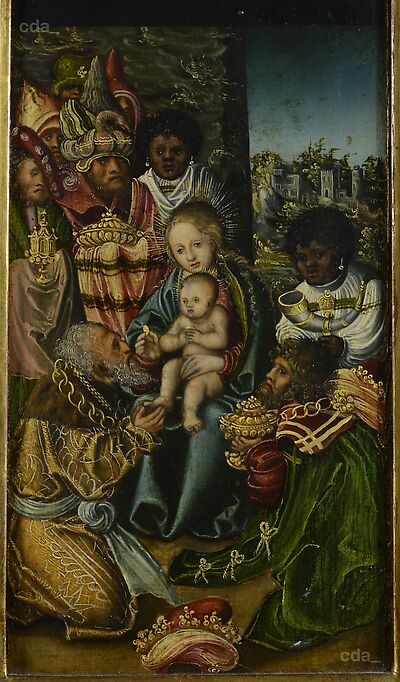Support
The following methods were employed during the examination: stereomicroscopy, XRF spectroscopy (Nitron XLt), UV-light, x-radiography, Infrared reflectography (Osiris 900 - 1700 nm)
The panel consists of a single hardwood board.
Ground and Imprimatura
A barbe or crest of ground has been preserved along the edges of the panel (see x-radiograph), suggesting that frame members were attached to the panel before the ground was applied. It may be assumed that the panels were fixed in their origin frame before the ground was applied as the dimensions of the painted surface on the inner and outer sides of the wings differ.
Underdrawing
Clearly pronounced underdrawing with a brush and /or quill pen employing a fluid black medium. On the outer sides the lines are dotted in sections. The aqueous drawing medium has beaded up on the oily isolating layer. The architectural elements and the figures are defined by contours and described in some detail, considering the scale of the image. Areas of shadow are occasionally indicated with hatching strokes.
No major changes to the composition were made during the painting process.
Paint Layers and Gilding
Using XRF analysis various elements were detected in the paint and after a comparison of their optical characteristics the following pigments could be identified:
Yellow: Pb, Ca, Sn, Fe, Cu, Mn, Sr, Hg
Pb: lead white; Pb/ Sn: lead tin yellow; Ca: chalk/gypsum? Fe/Mn: iron oxide/ ochre; Cu: blue/green with copper content?; Hg: vermillion; Sr:?
Blue: Cu, Pb, Ca, Fe, Sr
Cu: blue with copper content/azurite; Pb: lead white; Ca: chalk/ gypsum? Fe: iron oxide/ ochre; Sr:?
Green: Cu, Pb, Ca, Sn, Fe, Sr, (Zn)
Cu: green with copper content; Pb: lead white; Pb/ Sn: lead tin yellow; Ca: chalk/ gypsum? Fe: iron oxide/ ochre; Sr: ?; Zn?: lake substrate? retouching?
Red lake: Pb, Ca, Zn, Mn, Fe, Sr
Pb: lead white; Zn: zinc, retouching, lake substrate? Ca: chalk/ gypsum? Fe/ Mn: iron oxide/ ochre; Sr: ?
Red: Ca, Hg, Pb, Zn, Fe, Mn
Ca: chalk/ gypsum? Hg: vermillion; Pb: lead white, Zn: zinc white, retouching? lake substrate?; Fe/Mn: iron oxide/ ochre
The following pigments were identified in the paint layers: lead white, lead tin yellow, vermillion, azurite and a green pigment containing copper. The zinc detected in the areas of red paint and the fluorescence of this area in UV light indicate the presence of retouching and overpaint applied as a glaze.
The paint was applied with a brush in opaque layers and as a glaze. In the robes the paint was in part stippled (see x-radiograph) and the patterns on the floor tiles were scratched into the paint with a pointed object. In the x-radiograph no major changes are visible in the composition.
Framing
Gilded frame (not original)
[Blumenroth, Heydenreich, unveröffentlichter Untersuchungsbericht, 23.08.2021]
![Winged Altarpiece with Scenes from the Life of the Virgin [right wing: The Nativity (t.), The Adoration of the Magi (b.) [recto]; St Nicholas [verso]](https://lucascranach.org/imageserver-2022/PRIVATE_NONE-P527c_FR-none/01_Overall/PRIVATE_NONE-P527c_FR-none_2021_Overall-s.jpg)
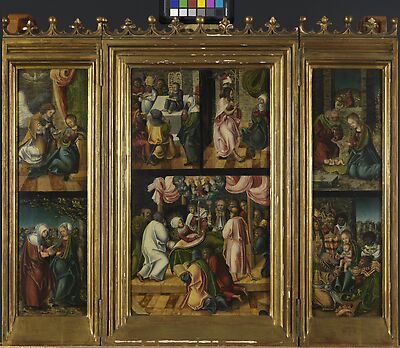
![Winged Altarpiece with Scenes from the Life of the Virgin [left wing]: The Annunciation (t.), The Visitation (b.) [recto]; St Roche [verso]](https://lucascranach.org/imageserver-2022/PRIVATE_NONE-P527b_FR-none/01_Overall/PRIVATE_NONE-P527b_FR-none_Overall-s.jpg)
![Winged Altarpiece with Scenes from the Life of the Virgin [central panel]: Twelve Year Old Jesus in the Temple (t. l.), Christ Appearing to his Mother (t. r.) and The Death of the Virgin (b.)](https://lucascranach.org/imageserver-2022/PRIVATE_NONE-P527a_FR-none/01_Overall/PRIVATE_NONE-P527a_FR-none_2021_Overall-s.jpg)
